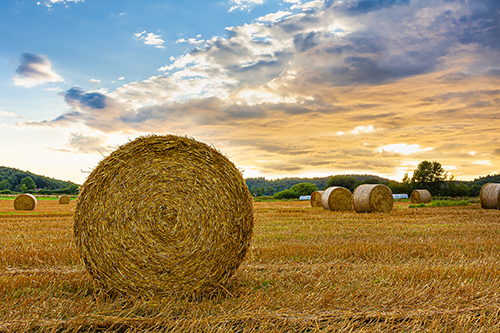Quality Forage during Hard Economic Times
Jun 27, 2022

When forage is the main segment of the diet, quality of a pasture or crop will ultimately be determined by performance of the animal (growth, reproduction, lactation, performance in a horse, etc.). Forage quality, defined simply as the ability of a given forage to meet nutrient needs of the consuming animal, can be affected by multiple issues.
Feed represents a large portion of production costs, and from a general sense, similar costs will be incurred whether forage is determined to be good or poor quality. Providing the best possible forage determines the amount of supplemental feed to be purchased to meet animal requirements. Undoubtedly, input costs for maintaining necessary forage growth and health will be much higher than in past years. Just as with the animal, requirements for desired level of performance do not necessarily change when fertilization or crop protection costs change. Consider the following:
Forages can produce the most affordable rations to feed livestock. While forage production can be most profitable through simple managerial practices, it is very important to understand the cost of forage production before determining the role it will play in your animals’ nutrition. Co-op Feed and Animal Health Specialists can assist in determining the best possible course for balanced rations. Find the Co-op nearest you here.
For more content like this, check out the latest issue of The Cooperator.
Feed represents a large portion of production costs, and from a general sense, similar costs will be incurred whether forage is determined to be good or poor quality. Providing the best possible forage determines the amount of supplemental feed to be purchased to meet animal requirements. Undoubtedly, input costs for maintaining necessary forage growth and health will be much higher than in past years. Just as with the animal, requirements for desired level of performance do not necessarily change when fertilization or crop protection costs change. Consider the following:
- Determine what quantity of forage will be necessary to supply animals to be fed.
- Not only are fertilizer costs increasing, but purchased feed is rising. Forage will still represent the least costly feedstuff, and providing the best possible quality can aid in profitability.
- Obtain suitable and representative soil samples and apply as necessary.
- From a forage management perspective, fertilization is probably the primary tool used to boost production. Notwithstanding current economies of input costs, it remains imperative to properly determine fertilization strategy. Plants also need nutrients to grow at the optimum rate, and there is no real way to determine quantities needed of nitrogen, phosphorous, or potassium from a visual perspective. The most economical nutrient management practice is to specifically know and understand how much to apply.
- Manage weed growth.
- Completely eliminating all weeds is likely not practical. However, an herbicide application may be necessary to prevent weeds from reducing forage growth and interfering with forage quality.
- If producing hay, prevent storage loss and wastage.
- With the cost of producing forage, extraneous waste cannot be afforded. University of Tennessee data have suggested as much as 40% spoilage when storing hay on the ground.
- Plan to harvest forage at the appropriate time.
- No matter which forage variety you choose to graze or harvest, or the level of nitrogen or mineral fertilization utilized, maturity will have the greatest effect on digestibility and energy available to livestock. When managing both forage quantity and quality, grazing or harvesting before the plant’s gross maturity will result in the most optimal animal acceptance and performance.
Forages can produce the most affordable rations to feed livestock. While forage production can be most profitable through simple managerial practices, it is very important to understand the cost of forage production before determining the role it will play in your animals’ nutrition. Co-op Feed and Animal Health Specialists can assist in determining the best possible course for balanced rations. Find the Co-op nearest you here.
For more content like this, check out the latest issue of The Cooperator.